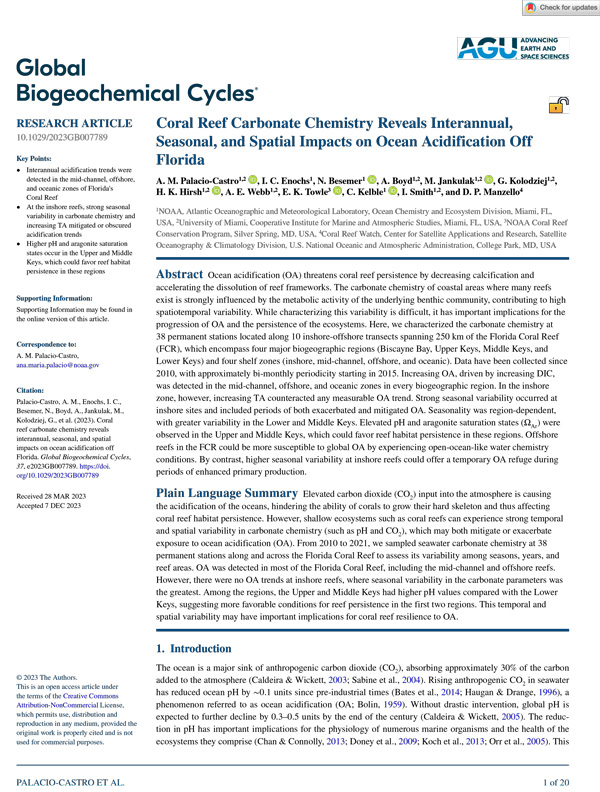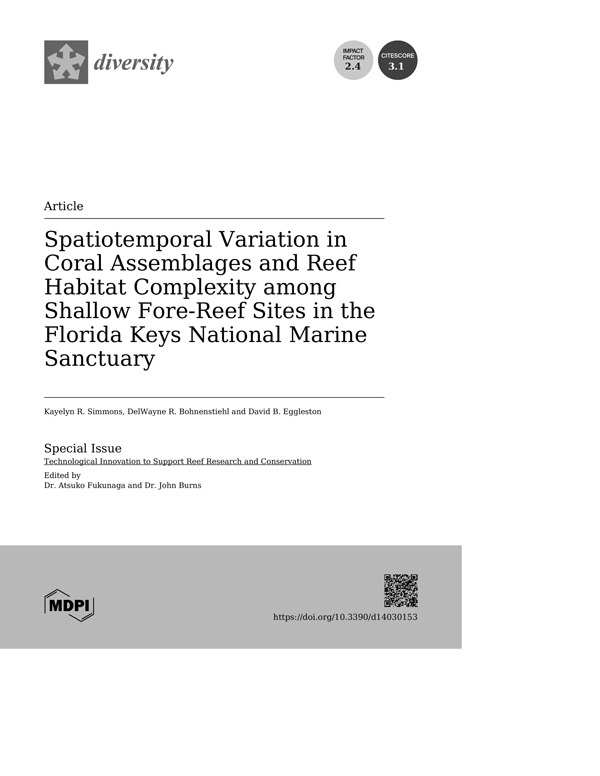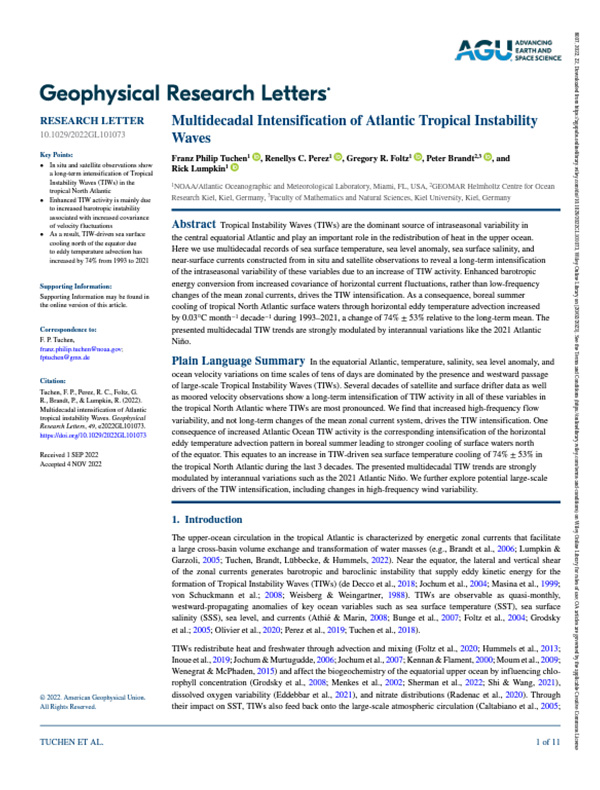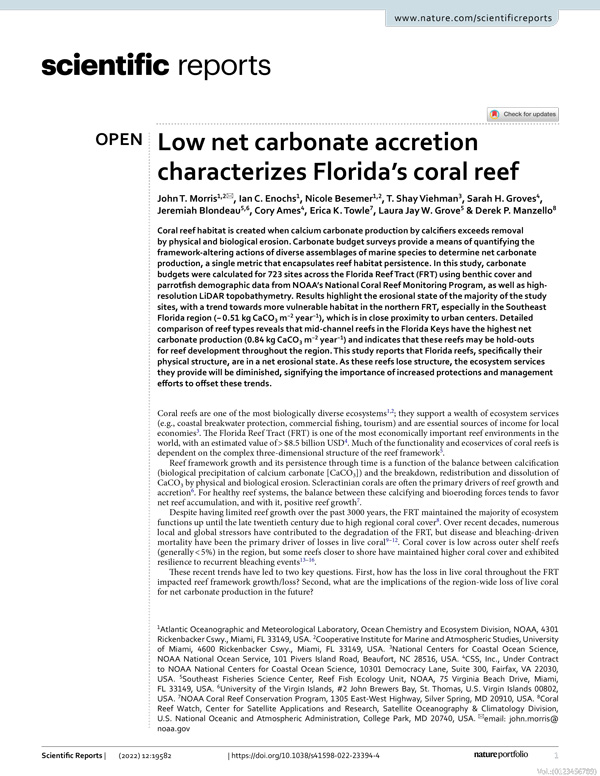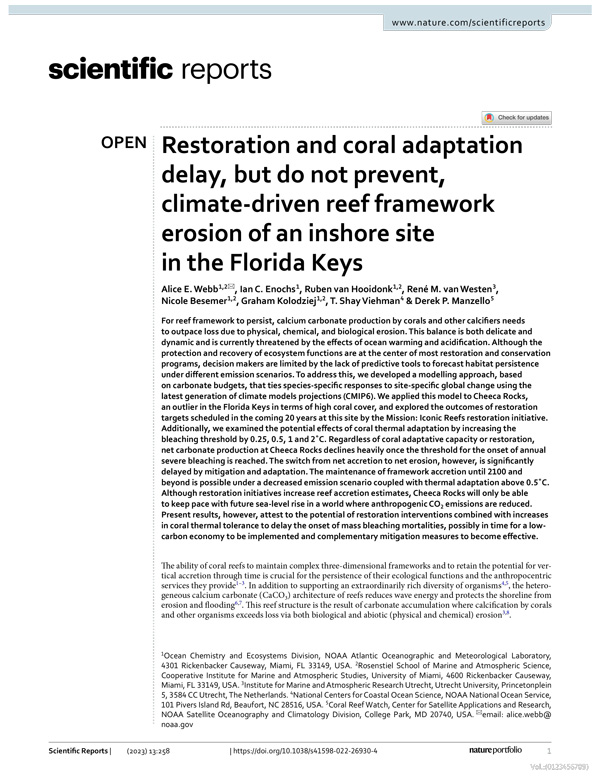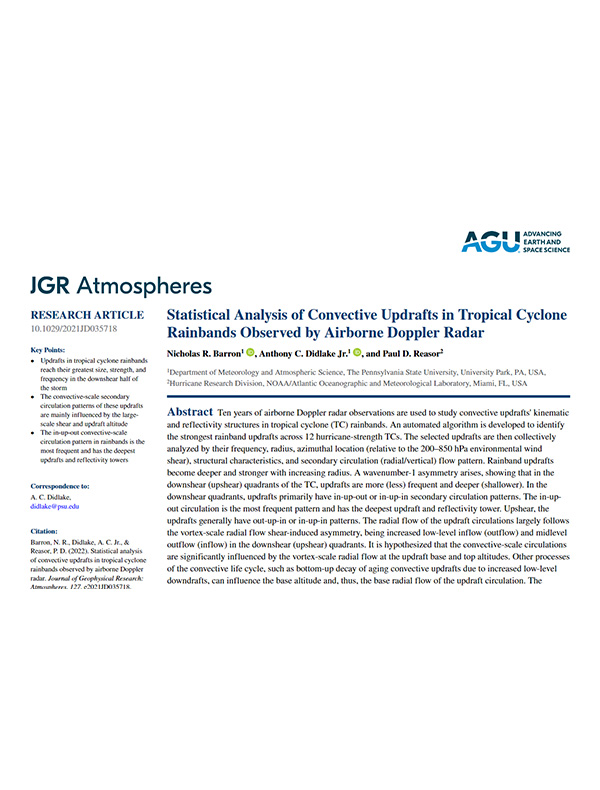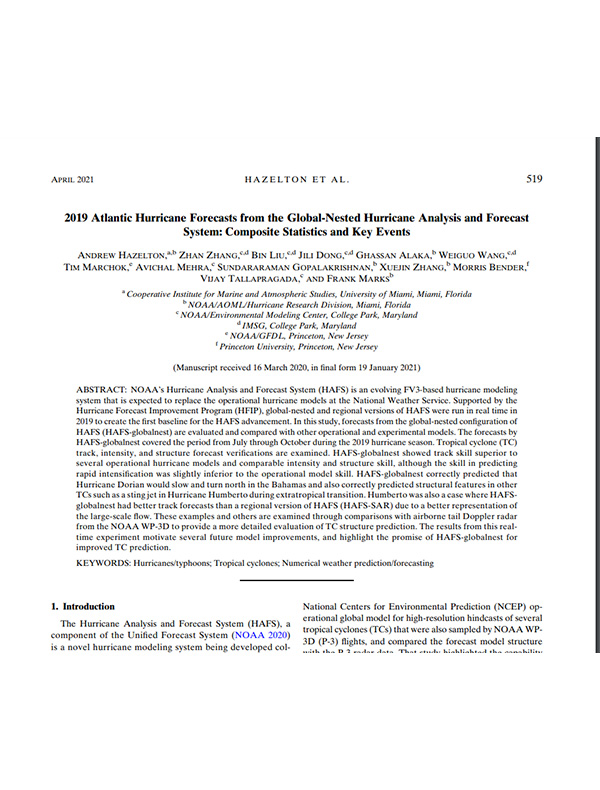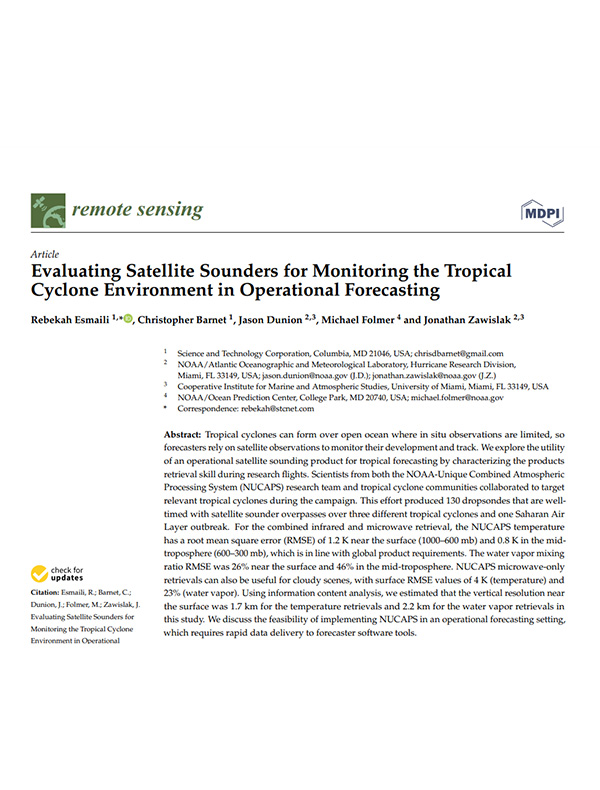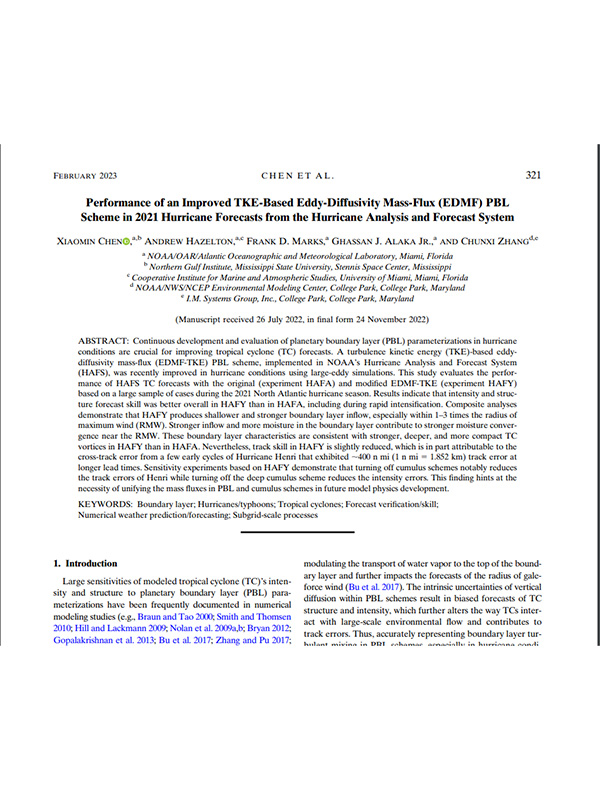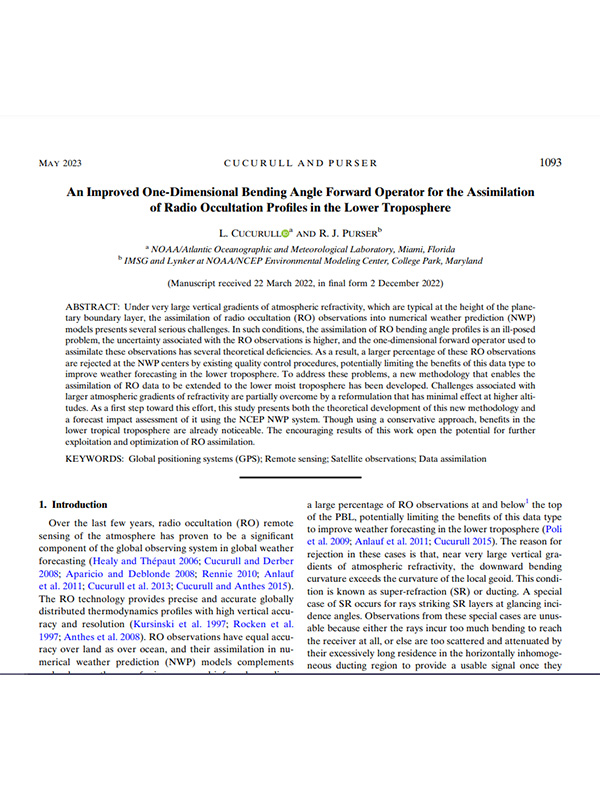Coral Reef Carbonate Chemistry Reveals Interannual, Seasonal, and Spatial Impacts on Ocean Acidification Off Florida
A. M. Palacio-Castro, I. C. Enochs, et al.
Ocean acidification (OA) threatens coral reef persistence by decreasing calcification and accelerating the dissolution of reef frameworks. The carbonate chemistry of coastal areas where many reefs exist is strongly influenced by the metabolic activity of the underlying benthic community, contributing to high spatiotemporal variability. While characterizing this variability is difficult, it has important implications for the progression of OA and the persistence of the ecosystems. Here, we characterized the carbonate chemistry at 38 permanent stations located along 10 inshore-offshore transects spanning 250 km of the Florida Coral Reef (FCR), which encompass four major biogeographic regions (Biscayne Bay, Upper Keys, Middle Keys, and Lower Keys) and four shelf zones (inshore, mid-channel, offshore, and oceanic). Data have been collected since 2010, with approximately bi-monthly periodicity starting in 2015…
